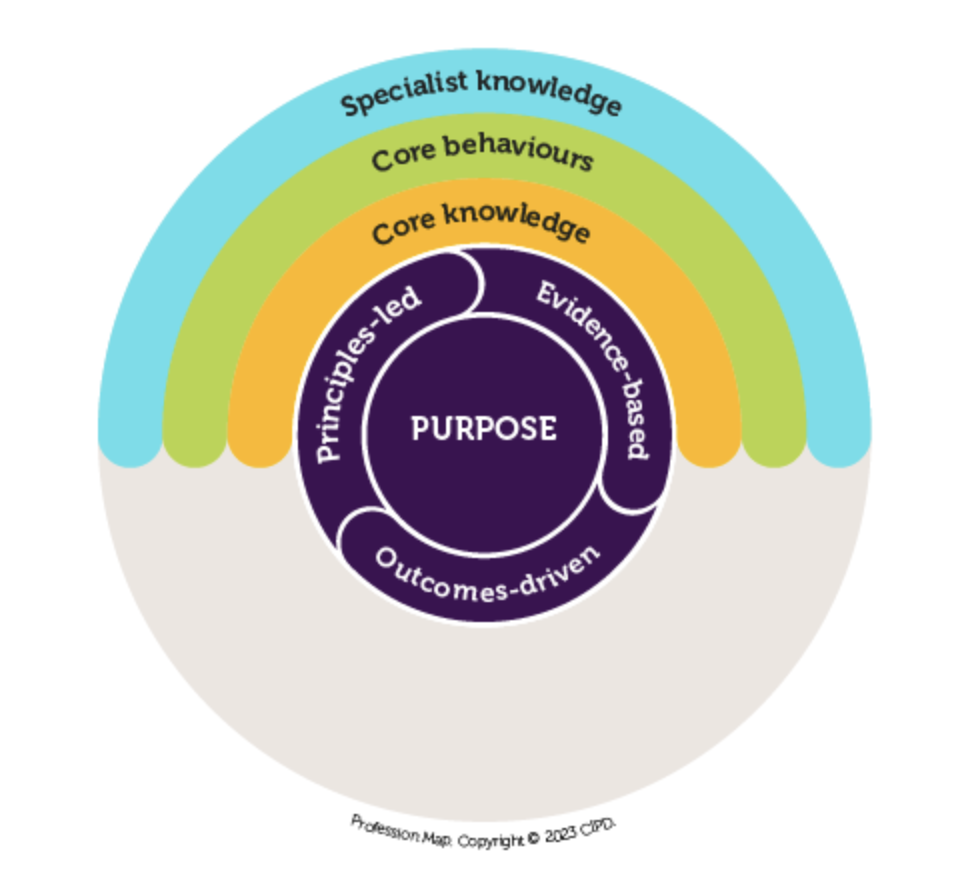HR Survival Guide: Learning Thriving in a Modern HR Role
Whether you’re just starting out in HR or looking to deepen your practice, it’s not always easy to know where to focus your learning. The pace of change is fast. Expectations are high. And the role of HR continues to evolve.
That’s why this post is designed to offer a practical survival guide — rooted in the CIPD Profession Map — to help you build the knowledge, skills and behaviours that will support you throughout your career.
This isn’t about ticking boxes. It’s about understanding the foundation of effective HR work and where you can develop confidence, credibility, and impact.
What Is the CIPD Profession Map?
The CIPD Profession Map is the UK’s benchmark framework for HR capability. It’s been developed by the Chartered Institute of Personnel and Development (CIPD) to define what HR professionals need to know, do, and behave like to be effective in today’s working world.
It’s based on real-world practice, built with input from professionals across sectors, and designed to evolve as the world of work changes.
The map includes:
Core Knowledge: What you need to know to do the work well
Core Behaviours: How you behave to build trust and influence
Specialist Knowledge: Additional expertise depending on your HR role (e.g. reward, L&D, resourcing)
At its heart is purpose — creating better work and working lives.
Core Knowledge: What HR Professionals Need to Know
These are the areas of understanding that underpin every HR role:
1. People Practice
Understand how people learn, behave, and perform at work. This includes theories of motivation, learning, change, and development.
2. Business Acumen
Know how your organisation works — financially, operationally, and strategically. HR decisions must align with business goals and context.
3. Evidence-Based Practice
Use data, research and insight to make informed decisions. This includes understanding key metrics (e.g. absence, turnover, engagement) and how to evaluate interventions.
4. Change
Know how change happens in organisations — both planned and unplanned. Learn how to support people through transition, uncertainty, and transformation.
5. Technology
Understand the digital tools shaping HR — from HRIS and self-service to AI, analytics and automation. Not just how to use them, but how they shape work.
6. Culture and Behaviour
Understand organisational culture, power dynamics, values and ethics — and how HR can shape inclusive and healthy working environments.
Core Behaviours: How HR Professionals Should Work
These are the professional behaviours that build trust, influence and impact:
Ethical Practice: Doing the right thing, even when it’s hard
Valuing People: Treating everyone with respect, recognising their potential
Working Inclusively: Seeking and embracing different views and experiences
Commercial Drive: Delivering outcomes that support the organisation’s success
Passion for Learning: Constant curiosity, reflection, and improvement
Situational Decision-Making: Balancing multiple perspectives to make informed choices
Insights Focused: Making decisions based on good data and understanding
Courage to Challenge: Speaking up with confidence and integrity
Role Modelling: Leading by example, whatever your level
Specialist Knowledge: Tailoring Your Expertise
Depending on your role or interests, you might need additional knowledge in one or more specialist areas, including:
Employee Experience
Diversity and Inclusion
Employee Relations
Learning and Development
Resourcing
Reward
People Analytics
Organisational Design and Development
Each has its own guidance within the profession map and can help you shape your career focus.
Building Your Survival Toolkit
Here are practical ways to work with the CIPD Profession Map in your own development:
What to DoHow it HelpsMap your current knowledge, skills and behaviours against the frameworkHelps identify strengths and gapsUse the behaviours as a self-reflection tool after ER cases or projectsBuilds emotional intelligence and judgementChoose one area per quarter to actively improveKeeps development realistic and focusedTalk to your manager about incorporating the map into your objectivesEncourages shared understanding of HR valueUse it to guide CPD, reading, shadowing or stretch assignmentsKeeps learning relevant and purposeful
Reflective Conclusion: Why It Matters
So why should we take this seriously?
Because HR isn’t just about process. It’s about people. And as the demands on HR grow — from strategic transformation to everyday ER — we need to be grounded, adaptable, and self-aware.
The CIPD Profession Map isn’t a checklist. It’s a lens. It helps us see the full scope of what good HR looks like and supports us to grow in areas that might otherwise be overlooked.
Reflection is a vital part of that process. It allows us to pause, think about how we’re showing up, and consider the broader impact of our work. Learning is never just about technical knowledge — it’s about the kind of professional you are becoming.
Whether you’re new to the field or revisiting the basics with fresh eyes, the survival guide is this: stay curious, stay grounded, and keep learning.
Because good HR is not just what you do — it’s how you do it.
—
Dibs HR
Practical HR. Thoughtfully done.
